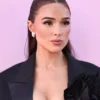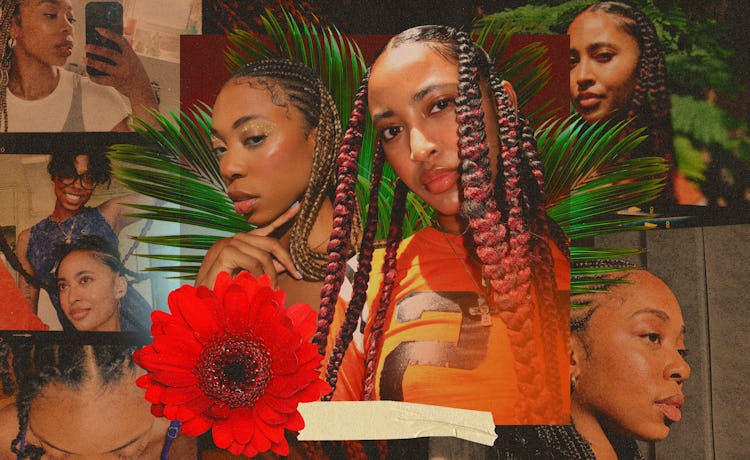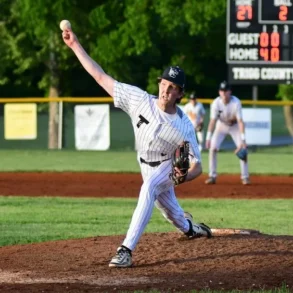It should be no secret that hair — and the relationship we have with our hair — is an important part of a Black woman’s identity. From the natural hair movement that emerged in the ’60s, to celebrities like Viola Davis and Zendaya wearing protective styles on the red carpet, natural textures and styles have always guided the Black woman’s experience in a beautiful journey of self-acceptance amid white beauty ideals.
Unfortunately, Black women still have to fight for their hairstyles and practices to be understood, represented and accepted in the face of prejudice and bigotry. In 2019, a monumental law called the CROWN (Creating a Respectful and Open World for Natural Hair) Act was passed in California, which prohibits hair-based discrimination on the basis of style and texture. Since then, Dove has helped launch the CROWN Coalition, the official petition that has thus far helped the act reach more than 20 states. There’s been incredible progress made — but clearly, there’s still work to be done.
The push toward defying hair-based discrimination has given weight to the plethora of ways we choose to wear our hair, including all types of curls, coils, twists, locs, and most notably, braids. The culture of braiding is one that often leads to a special, tight-knit relationship between a woman and her chosen braiding stylist. Depending on the style, getting your hair braided can take hours, and in the midst of quick fingers weaving strands and mountains of gel, oil, and hair grease, a beautiful style isn’t the only end result. Often, a fruitful bond, born from hours of conversation, human connection, and relatability, ends up being the most impactful outcome.
These relationships exemplify how Black hair isn’t just about a physical hairstyle, but can also serve as a conduit for connection, friendship, and understanding. It’s unique and beautiful in that way, and it’s worth celebrating, cherishing, and uplifting — from now through centuries to come.
Keep reading to meet three inspiring women and the special bonds they share with their braiders.
Sojourner Brown & Kayko Donald
Sojourner Brown
Sojourner Brown is an actor and musician based in New York City.
How did you and Kayko first meet, and what was your first appointment like?
Kayko and I met through mutual friends, and from Day One, I immediately knew I’d love her. I’m the type of person who always has my hand in multiple projects at once. I’m either working on an acting project, recording my EP, editing a poetry book, or hours deep into some sort of DIY craft situation. Whenever I meet other Black women who also love to express themselves through multiple artistic mediums, I can’t help but feel at home. Kayko is killing it in the music industry as a digital marketing specialist, and she’s an incredible, multi-faceted artist. So when I found out she is also dope at braiding hair, I was like, “Oh, say less!” Our first appointment felt just as expected, like an episode of Girlfriends.
How long have you seen Kayko, and how has your bond grown throughout the years?
I’ve been friends with Kayko for several years now, and she’s someone who never ceases to inspire me. Kayko is “wake up at 5 a.m. and run a 5K” type of tenacious. She’s also just the sweetest soul. I only just recently asked her to braid my hair, and now I don’t think I can go back to another salon anytime soon. Don’t get me wrong, there’s something so iconic and comforting about a Black hair salon that will always be sacred. But now that I know I have a friend who’s this talented at braiding hair, I definitely have a new go-to!
Getting braids feels like a treat and, in some ways, a return to self.
How long are your braid appointments usually?
In my experience, braid appointments can be anywhere from a couple hours to all day. So, at default, I just prepare for them to take longer than expected. Snacks are mandatory, as is music, and, in my opinion, good conversation. My favorite way to get my hair done is in my home by someone I love. There’s nothing like when the playlist is hitting just right, you have to stop to take multiple dance breaks, and you spend hours talking about everything and nothing. It’s Black sisterhood in its ultimate form.
How do you feel when you are wearing braids versus a different type of hairstyle?
About 90% of the time, I’m usually just letting my natural curls run free. I’ve spent the past few years working as an actor on Broadway and a recording artist for Walt Disney Records — and as an actor onstage and a singer touring on the road, I haven’t always been able to switch up my look as much as I’d like. Getting braids feels like a treat and, in some ways, a return to self.
My mom braided my hair every day for much of my life back in Nebraska. It felt like our own special ritual, and I’ve always appreciated the intricacy and detail that goes into it. I remember going to primarily white schools growing up and having kids tug on my braids or point and make fun of the styles my mom so painstakingly crafted. Thankfully, my family instilled in me that Black hair is magnificent in all its forms, regardless of what the kids at school said. But I’m grateful that legislation like he CROWN Act exists, because no child or adult should be made to feel like their hair isn’t beautiful.
What has been your favorite protective style you’ve done with Kayko and why?
My favorite protective style has to be faux locs, because of how stress-free they are to maintain. But I feel like a little kid in a candy store when I get my hair braided! There are so many styles and colors I want to try out. I love how versatile Black hair is and the rebirth that comes with changing up how you present to the world for a month or so.
When it comes to personal style, I always say that I like to dress for the day I want to have. Hair feels like another extension of that. There’s something beautiful about the autonomy you feel when you step out of the braiding chair.
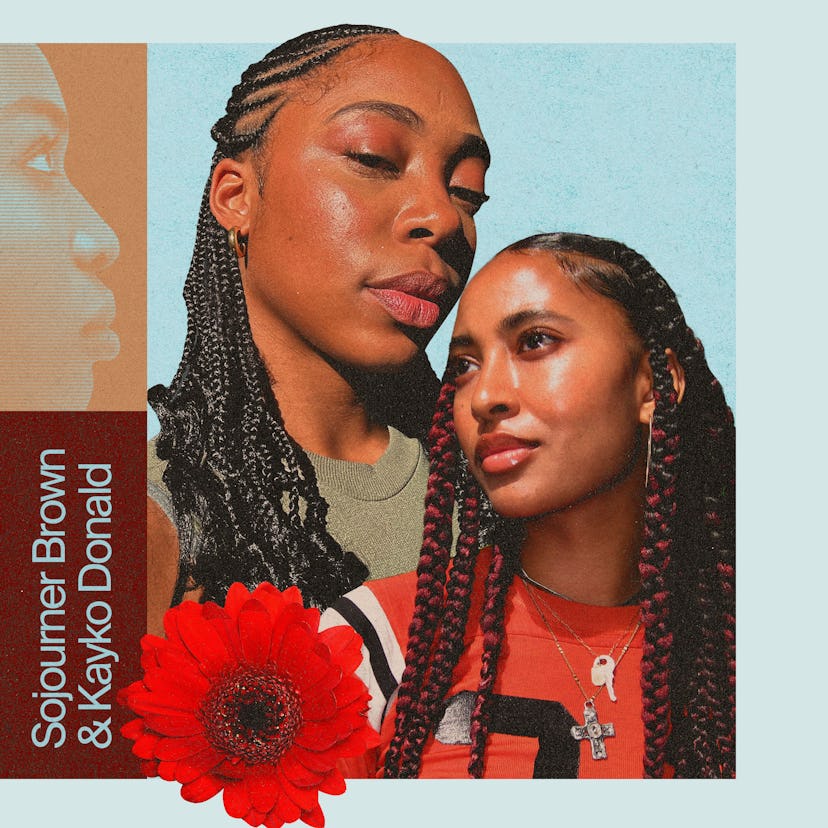

Kayko Donald
How did you and Sojourner first meet? What was your first appointment like?
Sojourner and I met in our boyfriends’ apartment! Our boyfriends used to be roommates, so I feel like I knew of Sojourner before I met her because of our proximity. But the first hair appointment I had with Sojourner was magical because because we were friends first. It was filled with songs from my chill mix on Spotify, and Sojourner singing along. We talked about so many things; I learned about her childhood, her Scottish accent, and so much more. It was special. Honestly, I kept thanking Sojourner for allowing me to leave a piece of my presence on her undeniable beauty. It’s inspiring to be around her.
How long have you seen Sojourner, and how has your bond grown throughout the years?
I’ve known Sojourner for three years now, and doing her hair has brought us closer. There’s something very special about styling someone’s hair — it’s a sign of trust they place in me. They believe I can execute their vision, so it’s my responsibility to meet that expectation with commitment. Since styling Sojourner’s hair, I feel there’s a new level of trust between us.
How would you describe your approach to braiding?
My approach is very gentle. It’s important for me to know before braiding if the person is tender-headed or has any conditions like excess dandruff that might affect their comfort. While I can braid tightly if needed, I prioritize thoroughness when caring for the scalp. I’ve experienced harsh braiding in the past that left my hair more damaged than before, so I understand the importance of gentle handling.
What do braids symbolize to you?
To me, braids symbolize something very intrinsic to my life and experience as a Black woman. I vividly remember when I was about 7 years old, playing with my hair in the backseat of my mother’s car, and accidentally creating a braid pattern. It left a lasting impression on me. Braiding has been a part of my life for as long as I can remember; it’s a significant aspect of my lifestyle and routine. It’s also an art form that can transform someone’s entire presence. I remember telling Sojourner, “OK… who is she?!” after she got her hair done last time because she exuded a new persona — freshness and confidence. There’s nothing quite like the feeling of the wind on your scalp with fresh braids — it’s almost ticklish. So, yes, for me, braids symbolize routine, confidence, and beauty!
Maya Allen & Anta
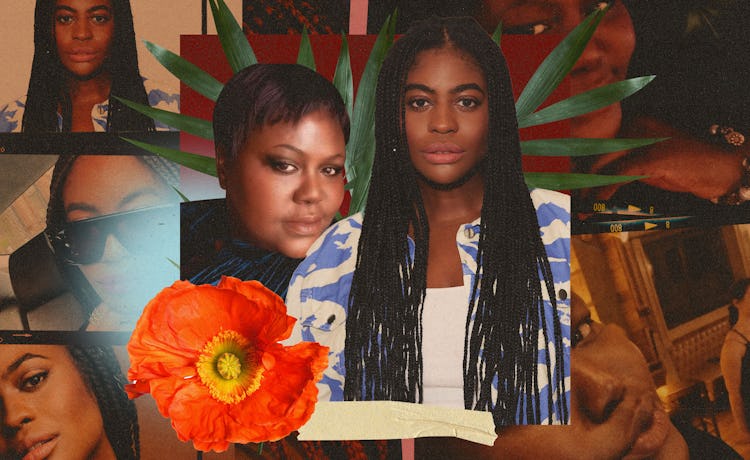

Maya Allen
Maya Allen is a beauty expert and editor based in New York City.
How did you and Anta first meet?
Finding a good braider is like playing a game of telephone: trustworthy recommendations always start with one friend telling another. I met my hair braider Anta through one of my closest friends, who raved about how relaxing the appointment was because Anta makes house calls. Not having to sit in a crowded salon all day and getting your hair done from the comfort of your own couch feels like the ultimate luxury.
My first appointment with Anta was back in 2016. I had just graduated from college and was working as a beauty assistant at Cosmopolitan magazine. I was exhausted from working long hours and needed a low-maintenance hairstyle. Anta came over to my apartment, and I instantly felt at ease with her vibrant personality. Beyond being a skilled braider, Anta exudes an optimistic aura that lights up any room. Although we had just met, it felt like we were old friends catching up. It was my first time getting box braids, and I was thrilled with the results. I couldn’t believe how easy it was to get up and go with this hairstyle.
How long have you seen Anta, and how has your bond grown throughout the years?
I met Anta shortly after I moved to NYC, marking nearly eight years of knowing her. She’s seen me through many of my New York phases: career transitions, new apartments, and more. The relationship I have with my stylist is always special. Over the years, we’ve spent significant time together — over eight hours in one appointment. Naturally, much more than hair braiding happens in one sitting — it’s an energy exchange. We share life stories, talk about our families, watch shows and movies, have meals, and much more. It’s a very intimate encounter, especially during difficult moments. Sometimes, getting my hair done feels like a therapy session.
What’s a typical appointment with Anta like?
For box braids, one appointment can take up to seven to nine hours, depending on the size of the braids I request. It sounds like a long time, but I never get restless since I’m so relaxed. Anta likes to create a spa-like vibe, so she always guides me to lie down while she’s braiding, which makes me feel pampered and at ease, especially since I’m at home. If I’m on a work deadline, I can be on my laptop with no interruptions. Other times, we’re laughing over a story Anta is telling me or enjoying TV together. I’ve even napped if I’m too tired. We go with the flow.
It’s a very intimate encounter, especially during difficult moments. Sometimes, getting my hair done feels like a therapy session.
How do you feel when you are rocking braids versus a different type of hairstyle? What do braids symbolize to you?
Braids make me feel free and liberated. I can get up and go without having to spend time touching up my hair. I embrace playful styles and love wearing my braids in various ways — whether I pull them up into a topknot or a half-up, half-down ponytail. Braid season for me is always summer; it’s my go-to protective style in the heat. And if I have a beach vacation, braids are always on the menu so I can swim freely without worrying about my hair. Beyond knotless box braids with Anta, I also love experimenting with other styles like Fulani braids, goddess braids, cornrows, and more.
I grew up in Portland, Oregon, where I was often the only one in the room who looked like me. To avoid the woes of tokenism, I straightened my hair because I believed the false beauty standard that straight hair was the single most beautiful hairstyle. It wasn’t until 2016 that I wore my natural hair in public and started experimenting with braids the following year. I wrote about both of these emotional experiences for Cosmopolitan, where I also helped launch the magazine’s first-ever Black hair video series called “The Braid-Up.” It’s never just “hair” — braids mean much more than that. Braids carry such a rich cultural history rooted in Africa as early as 3500 B.C., which makes the style feel so symbolic to wear.
What has been your favorite braid style you’ve done with Anta and why?
I love Anta’s knotless box braids because I can wear so many different styles within that one style. The options are endless. With box braids, I’ve worn high ponytails; Bantu knots; topknots; half-up, half-down; fishtail braids; and more. I’ll add gold cuffs or beads to accentuate the style. I can also wear the style for six to eight weeks, which is very convenient for my busy schedule.
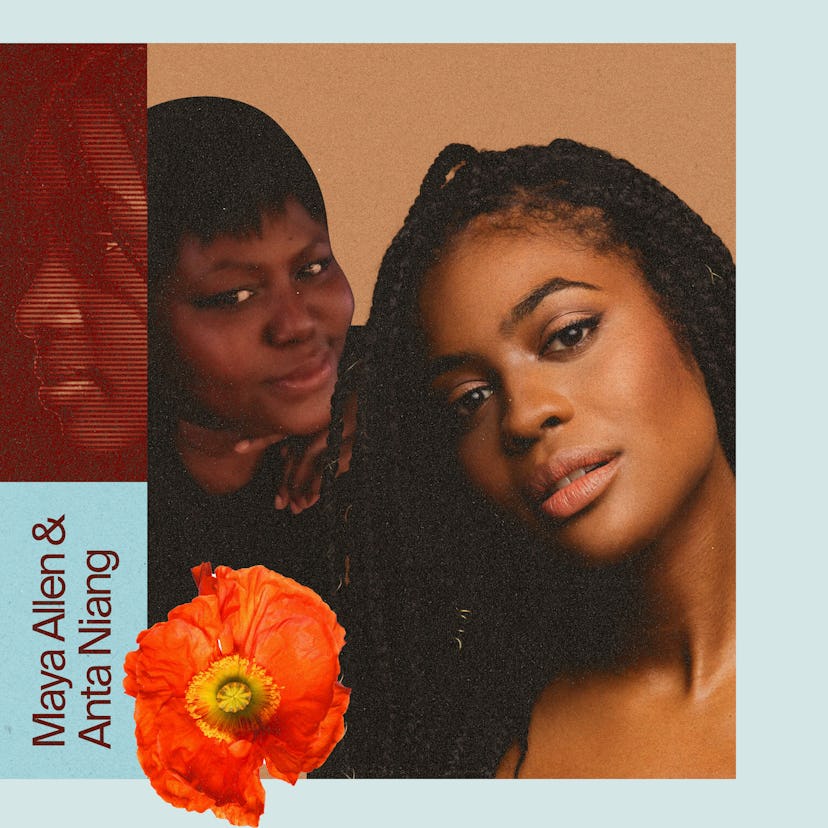

Anta
How did you first meet Maya?
I met Maya in July 2017. She saw triangle braids I made for one of her peers and liked it. In the image posted, I was playing with shapes of triangles, and then I did squares with another of her friends. That was a fun thing — to bring in the African hair braiding. At that time, my motto was to introduce geometry to the scalp, partying and playing with it.
Maya screenshotted the Instagram photo I did and asked me if she could do that style, and we set up a date. She said she had never done braids and was nervous. Seeing that I had done braids on someone she knows made her more comfortable.
How has your bond with Maya grown since your first appointment?
I feel it is a very special connection, braiding another Black woman’s hair — an African sister that I connected with through an African cultural element such as braids. When doing it, the disconnect of the land, sea, and time gets bridged. I know it’s not really that simple, but I feel like installing Maya’s braids was a birthright she was expressing.
How would you describe your approach to braiding?
I was known by Maya’s peers for not braiding with tension and understanding their generation. I was a fashion producer then and playing with looks, shapes, and ways to braid. Antabraids was a brand I created online to reach the Instagram and online generation. People used to walk to the shop and negotiate to get their hair done right there.
It was her first time, so I shared the spa hair-braiding experience with her, where she lays on the sofa like a princess and I do her braids. I feel every Black girl is an African princess. That’s how you are treated and dressed and braided where I come from in Tivaouane, Dakar in Senegal, and that’s my approach to braiding.
Felicia Walker Benson & Mudiwa Sabur
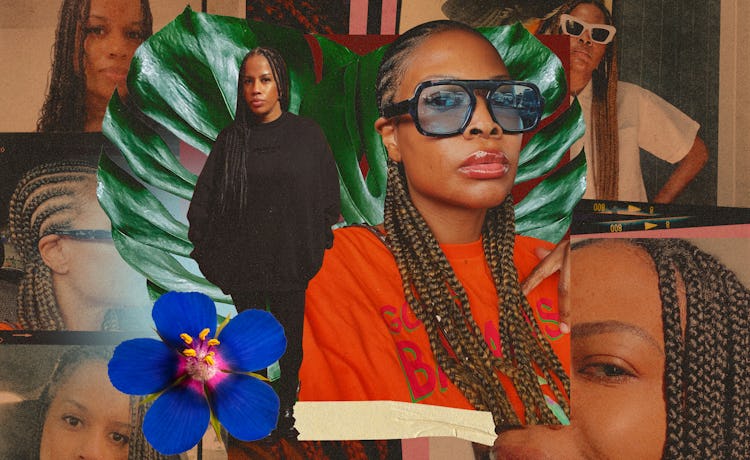

Felicia Walker Benson
Felicia Walker Benson is a beauty content creator based in New York City.
How did you and Mudiwa first meet?
This question brings back so many memories. I had a big photoshoot with a beauty brand on Jan. 15, and I was scheduled for a much-needed vacation on Jan. 16. And one thing about me — if I’m going on vacation, I’m most definitely getting braids. It’s my vacation nonnegotiable. I’m usually not picky with vacation braids, but because there was no buffer between my photoshoot and my trip to Mexico, one hairdo was going to have to suffice for both. And because this campaign was a huge deal, I knew my braids had to be on point.
I was in a bind! When I reached out to Mudiwa, I couldn’t believe she had an opening. I remember feeling so lucky. I was all, “Look at God.” Mudiwa came highly recommended, and I had been following her work for a while. I sent Mudiwa an inspo pic, and she assured me she could execute my desired style.
What was your first appointment like?
I wanted small, extra long, knotless braids, so my first appointment was a five-hour affair of Netflix, Doordash, shared lessons, shared losses, and ultimately, a rebooking.
How has your bond with Mudiwa grown throughout the years?
I started seeing her in January of 2020, so right before COVID got real. Once restrictions opened up a bit, I was able to resume braid appointments with Mudiwa. So in scanning nearly five years of several braid appointments per year — whew, we have co-lived some life! Mudiwa loves skin care almost as much as I do, so we are always bonding over products and treatments. And it’s not just me doing the influencing — Mudiwa has influenced me to try so many things that I’ve ended up sharing with my online community. Mudiwa is also a mom, so we have found connection and community there. She gives great advice!
Can you describe what a typical appointment looks like?
When I first started visiting Mudiwa, I used to pick a lot of five-hour styles. Now, I walk in and basically ask her to do whatever she wants in two to three hours. I am always happy with what she creates. She is lightning fast, and her precision is top tier.
Energetically, we always go with what’s flowing. Sometimes it’s wine and Tubi TV. Sometimes it’s complete silence because we both need it. Sometimes it’s a revolving door of clients coming and going… group debates, hot topics, fitness tips. Just vibes on vibes on vibes.
How do you feel when you are wearing braids versus a different type of hairstyle?
First of all — I feel free! The freedom that comes with not dedicating time to daily hairstyling is unmatched. Braids allow me to be ready in minutes. So much of my lifestyle has morphed into what comes easily. All of my personal care routines have a pretty steady flow… so to be spending a lot of time on my hair everyday? It’s a no. Also, I’m sometimes chaotic in my life events, so it’s very freeing to know hair is not another thing I have to think about when there’s a last-minute social event to attend.
What has been your favorite braid style you’ve done with Mudiwa?
I got remarried recently, and Mudiwa did my braids for our civil ceremony. The style was airy, light, flowy, really sweet. Also, every style that’s done in two hours is my favorite, because of the time!


Mudiwa Sabur
How did you and Felicia first meet?
I was introduced to Felicia Walker by a longtime client who told me a friend inquired about her beautiful braids and who her braider was. Felicia arrived 20 minutes early for her appointment, which is always a plus in my book for new clients because it allows a little extra time for a consult. We looked over her braids inspiration photo and the conversation began to flow.
How has your bond with Felicia grown throughout the years?
I’ve been braiding Felicia’s hair since 2020, and when I say we’ve developed such a great friendship… she’s now my go-to for skin care advice. I scheduled my skin care consultation with Felicia, and my skin transformation was beyond my expectations. She’s the best!
Braids have always been a work of art, a calming experience allowing my sole focus to be on a finished masterpiece.
How would you describe your approach to braiding?
My approach has always been a form of expression for not only my clients, but myself too. Once I get an idea of what style the client is aiming for, then and only then will I add a touch of what’s best and give them the style. Hair care is always my top priority — factoring in density, length, tension, and overall health of the hair to achieve the desired look. This guarantees the client’s satisfaction.
What do braids symbolize to you?
Braids have always been a work of art, a calming experience allowing my sole focus to be on a finished masterpiece. From the intricate designs, precise parting, and details to the finished product on display for the world to see. The process reminds me of my very own art exhibition every time.
This post was originally published on this site be sure to check out more of their content.

